Raising a Bilingual Baby: 5 Things Parents Should Do
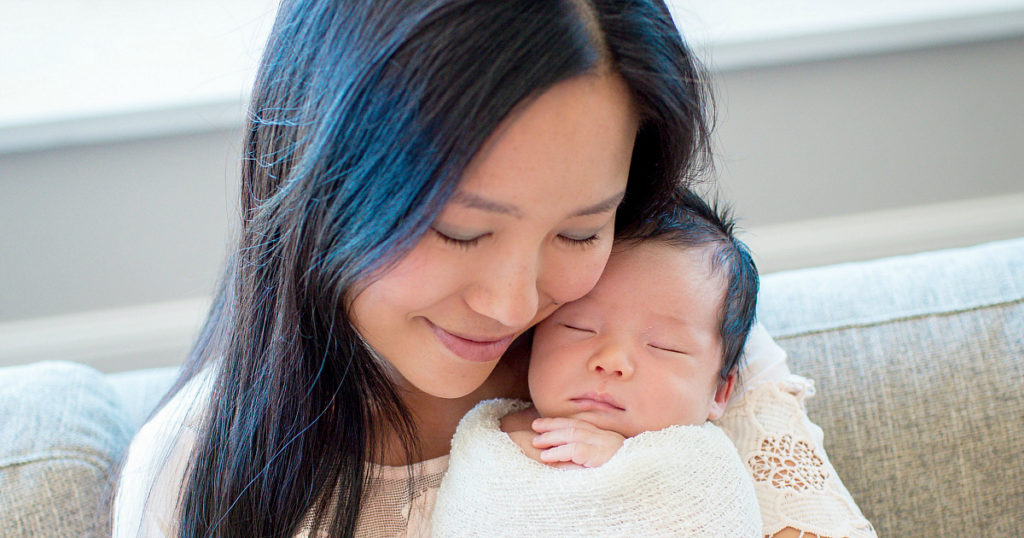
This guide to teaching babies Chinese, Korean, and other languages is what I wish I had when my first child was born. Raising a bilingual baby is much more nuanced than speaking a language. It’s about empowering parents and curious kids to have respectful, connected bilingual relationships.
In a monolingual country like the United States, a multilingual journey requires deliberate effort, preparation, and commitment.
Overcoming doubts about raising a bilingual baby
When our first child was born, my husband and I were exhausted and working erratic hours. We were not sure if our kids would learn other languages.
Our parents were fluently bilingual but failed to pass their languages to us. How could we possibly stand a chance?
My husband realized he would not have the energy to teach Korean, and I had forgotten how to speak Chinese.
Parenting a baby is physically and emotionally demanding, and we were barely surviving in just one language! After moving to a different city, we parted ways with our beloved Korean-speaking nanny. Within weeks, my first child became monolingual again.
By the time my second child was born and my oldest child was nearly 3, I had more insight about our goals and capabilities. I knew raising multilingual children would be worthwhile and meaningful for our family.
Raising a Bilingual Baby: 5 Things Parents Should Do
To jumpstart your journey of raising a bilingual baby, I’ve highlighted the five most important steps you can take whenever you’re ready.
If you have older kids, read Teach Your Child a Second Language at Home with 5 Key Steps.
More tips about raising bilingual children
- 7 Reassuring Facts About Raising Bilingual Children
- Teaching Minority Languages to Kids: A New Approach Can Help
- The Risks of Overnurturing with Multilingual Parenting
Determine who will speak what language to the baby
The first step is to create a language plan with your spouse, relatives, and other caregivers. Talk to your family about your hopes for raising a bilingual or trilingual child. Even if spouses and grandparents are monolingual, they can still support raising a bilingual baby.
Important questions to discuss:
- Who should speak what language(s)?
- What are realistic goals for each language? (Read this Letter to Parents from Dr. Oliver Tu)
- Do you need to take lessons (eg, online tutoring) to improve your fluency in the target language(s)?
- Can you hire a fluent caregiver to help raise a bilingual baby?
- What physical resources do you need for each language?
- How much can you budget for resources in the minority language (eg, books, travel, caregivers)?
Try this: 10+ Ways to Find a Language Teacher for Your Child
In the past, we have outsourced Korean to nannies. After long work days, my husband does not have the energy to speak Korean.
On the other hand, I have been motivated to relearn my mother tongue, Chinese, along with my kids. Regardless of our differences, we have been supportive of each other.
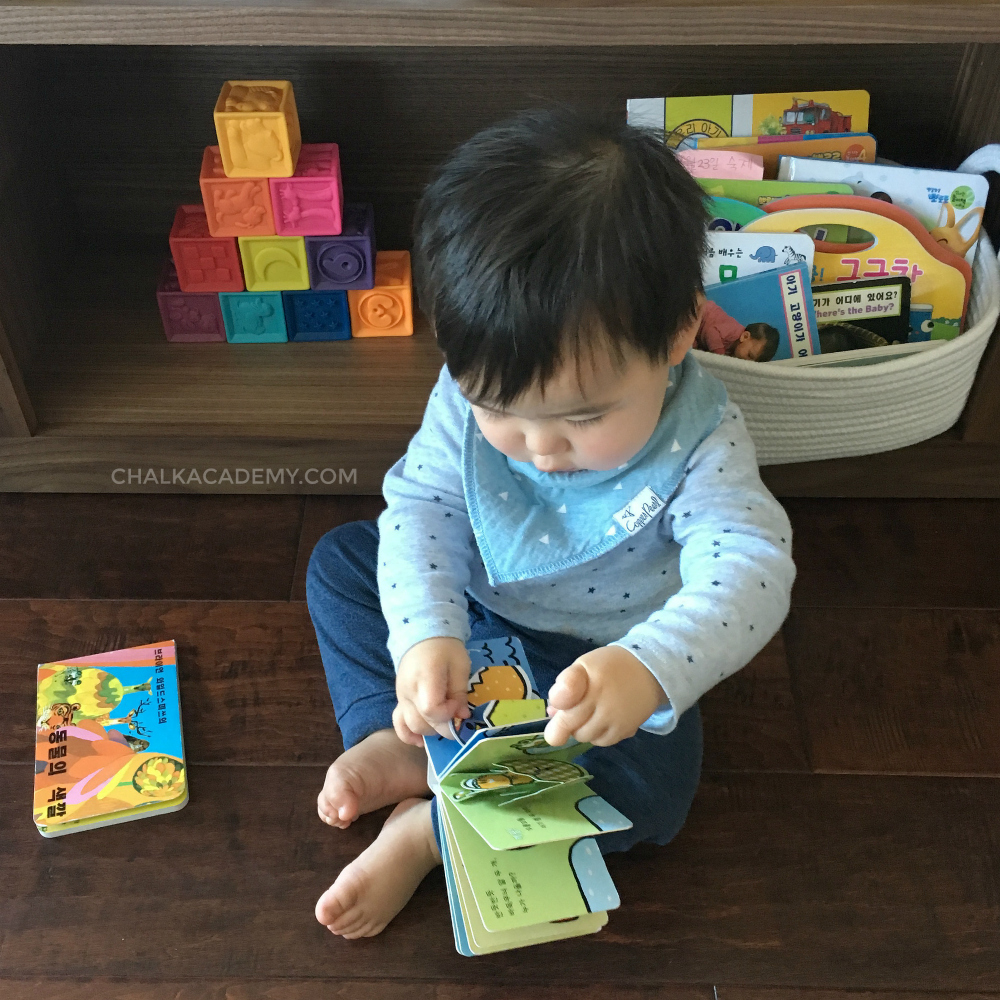
Prepare your home for the minority language
After you and your spouse have decided about languages, the next step is to prepare the home for your bilingual baby.
If you live in a monolingual community, creating an environment that nurtures the minority language(s) is crucial.
What does a prepared environment look like?
- Music and books should be readily available in the minority language.
- Labels in the target language contribute to a print-rich environment that provides visual reminders for language goals.
- Artwork and decorations that celebrate your culture(s) and languages.
- If the family struggles with the minority language(s), distractions in the dominant language may need to be removed.
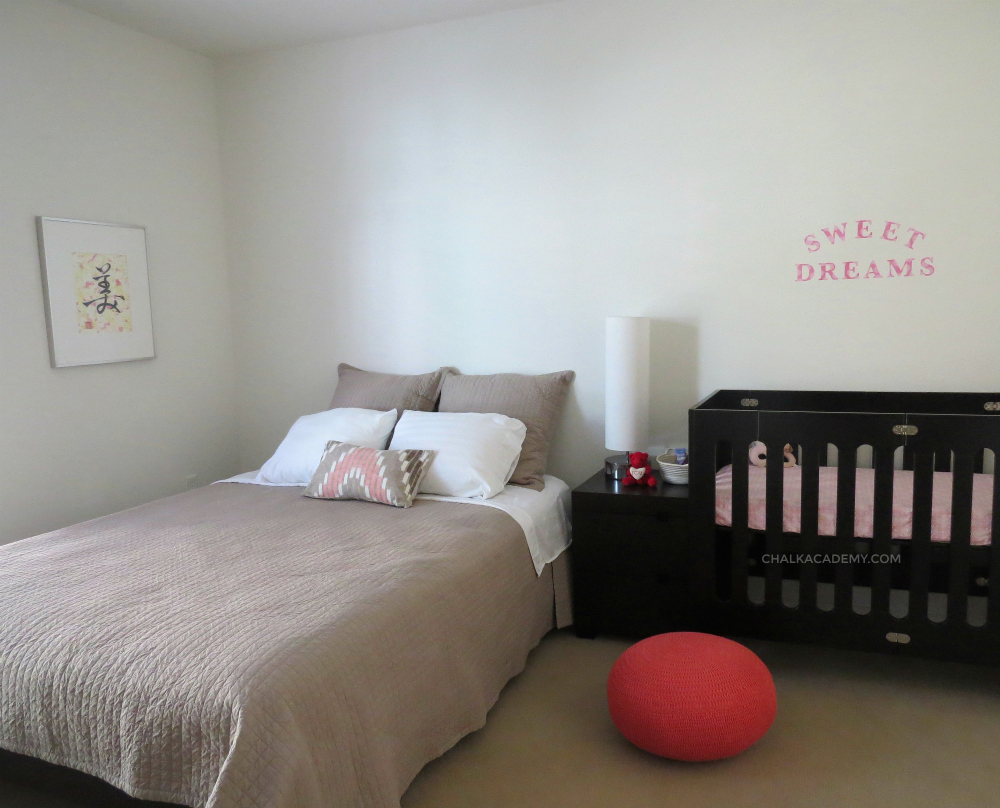
Although babies can learn multiple languages simultaneously, families may wish to defer teaching the dominant language.
During the infant, toddler, and preschool years, a strong foundation in the minority language(s) can be established before learning the dominant language. Generally, the dominant language will catch up quickly during the school years.
Explore this: How We Transformed Our Play Area / Homeschool Room – Before and After Guide
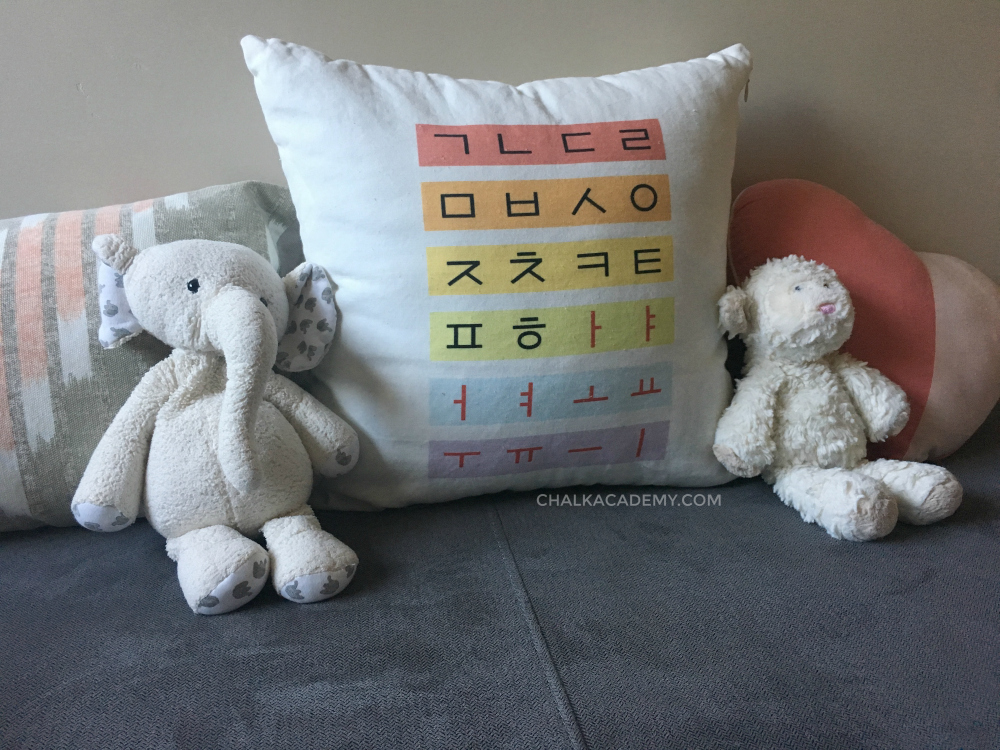
Talk to the baby in the target language consistently
From the first day of life, babies constantly learn about their parent’s sounds, facial expressions, and body language.
Speak the minority language consistently to create a habit and establish a language relationship.
- Talk to them with clear, descriptive, and positive vocabulary while bathing them or taking them for a walk in the baby carrier or stroller.
- Narrate your actions, such as drinking water, eating food, and picking up your baby. Share your observations, such as color, counting, texture, sound, and other findings.
- While speaking, point, hold, and touch objects so your baby learns what you are saying. Visual and tactile input reinforces each spoken word.
- Use real words and avoid baby talk.
- Consider using sign language. Even before a child is ready to talk, this can help with communication. Learning common signs for baby words can also establish a foundation to connect with the Deaf community.
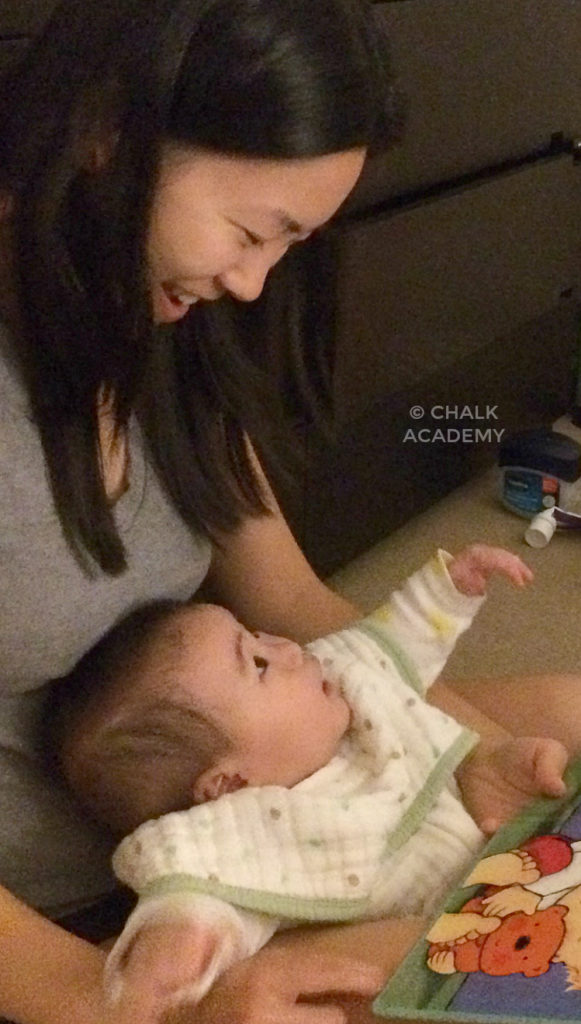
Sing songs in the target language
Children are naturally drawn to music, and singing is a fun way to expose your child to various tones and rhythms in your language. Dance to your favorite songs!
If you need a refresher on classic nursery rhymes, check out:
Read baby board books in the target language
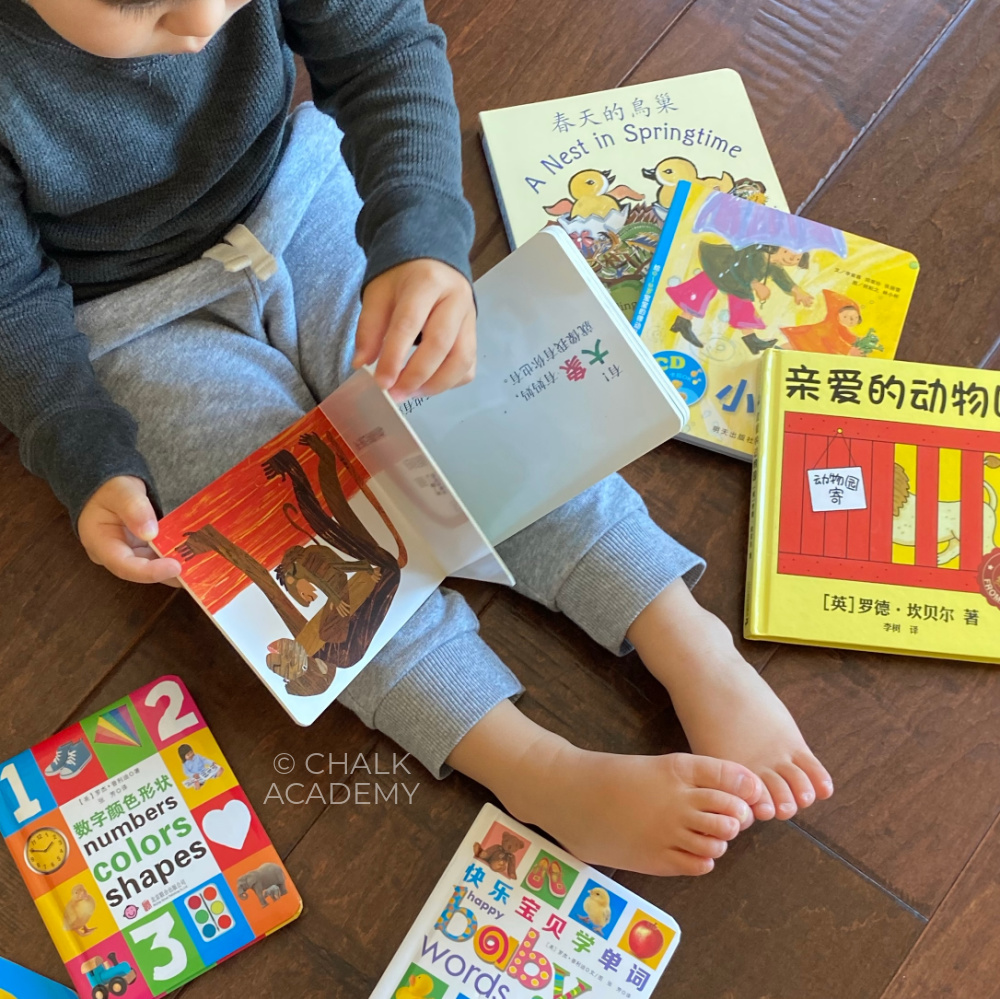
Create a daily routine of reading baby board books in each target language, especially the minority language.
Since babies are curious about the world, look for board books with realistic photos, such as pictures of animals and other babies.
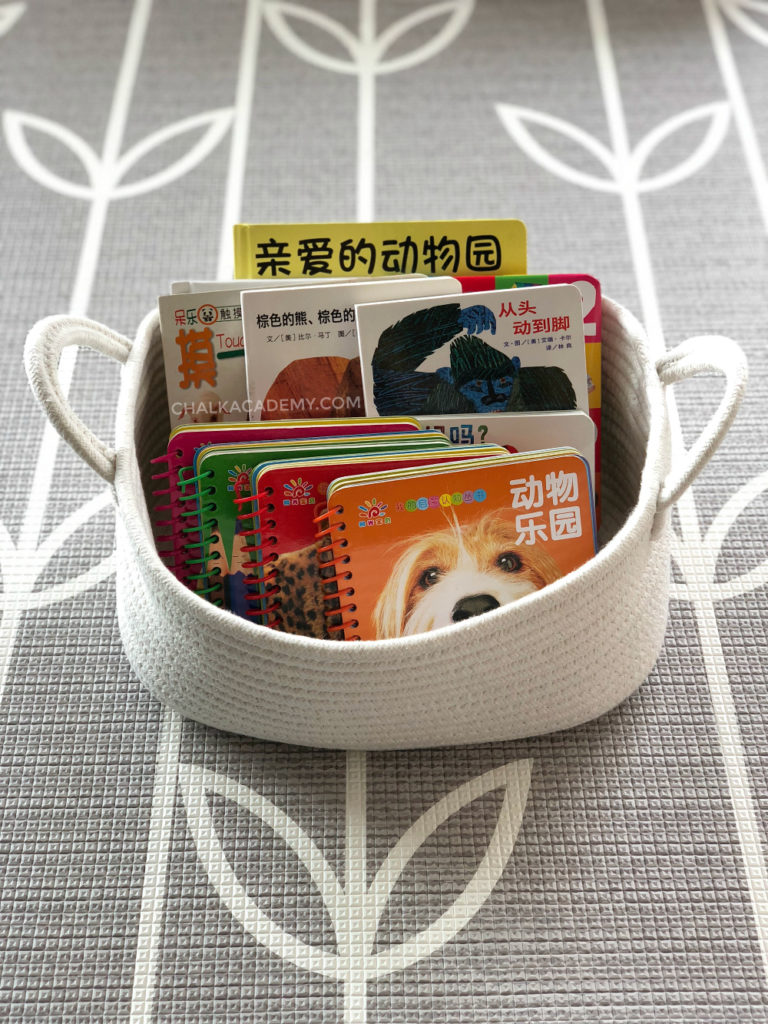
Other tips to consider:
- Remember that little ones are normally active and might only sit for a few minutes.
- Touch-and-feel sensory books or those with sturdy flaps are opportunities for participation.
- Beware of overstimulating media; books with crisp, simple visuals and few images per page are great for babies.
- Make books accessible, such as in a basket on the floor or a front-facing wall shelf. Over time, babies can practice getting books and sitting for longer periods.
Try this: 15 Ways to Encourage Your Child to Read
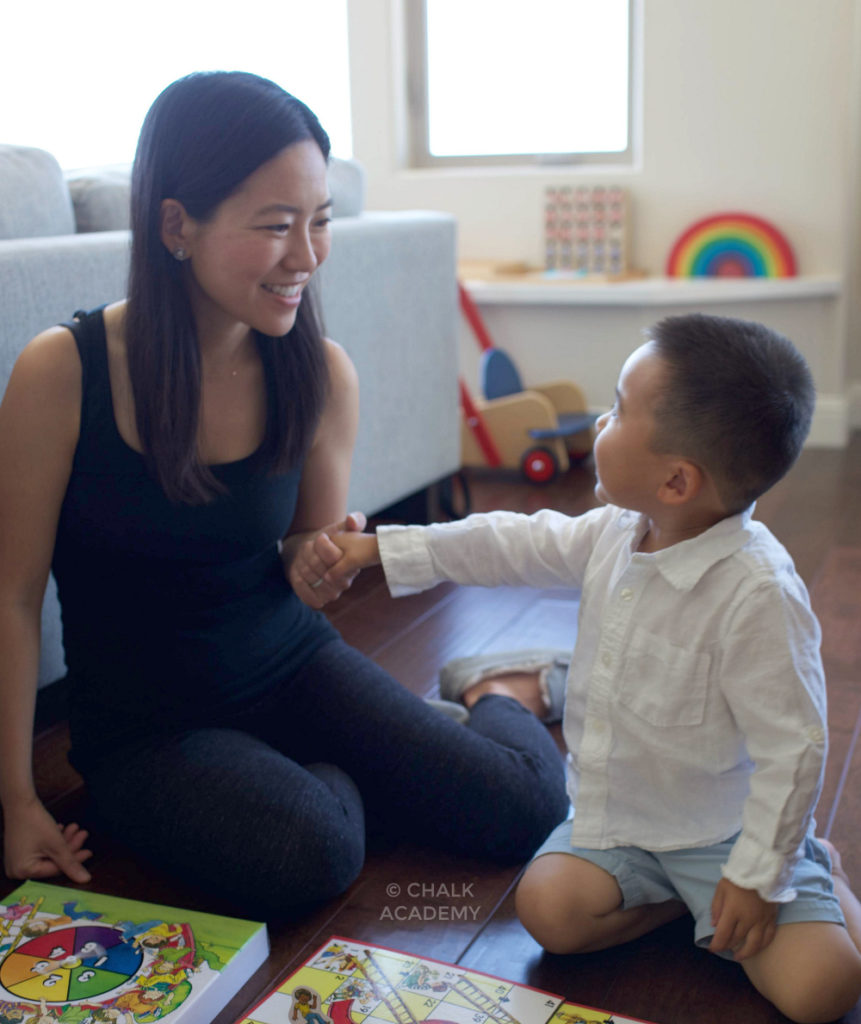
What do you don’t need to raise a bilingual baby
Good news! Despite the ads that bombard us everywhere, I’m putting my pediatrician hat on to say you don’t need a million toys.
You also don’t need to create special activities at this age. Everything is naturally exciting and new for babies and young toddlers.
Besides video chatting with relatives, screen time can negatively affect development and attention span. Please don’t park your baby in front of the television; infants and young toddlers need interaction with real life, including quiet exploration.
What should I do when my bilingual baby becomes a toddler?
Reassess your language goals, resources, and support system! If raising a bilingual child remains important, continue bonding in the minority language.
Keep singing and reading to your child, and talk to your child while doing everything from chores to adventures outdoors.
As time permits, fun memories can be created with simple activities, such as:
- Going on a scavenger hunt (printable in Chinese, Korean, English)
- Giant color sorting
- Matching animal photos
- Leaf sorting and learning about the parts of a flower
- Making rainstick sensory bottles
- Line and letter sticker tracing – pre-writing skills for kids
And regular household chores (Montessori practical life skills) are often exciting for toddlers. Talk in the minority language while your toddler learns to:
- Sort Tupperware
- Throw clothes in the hamper
- Wash fruits and vegetables (eg, water play!)
- Wipe the table
- Sweep the floors
Remember: the best guide is your child and his or her interests, and take it from there.
Do as little or as much as you can manage for your family’s bilingual journey.
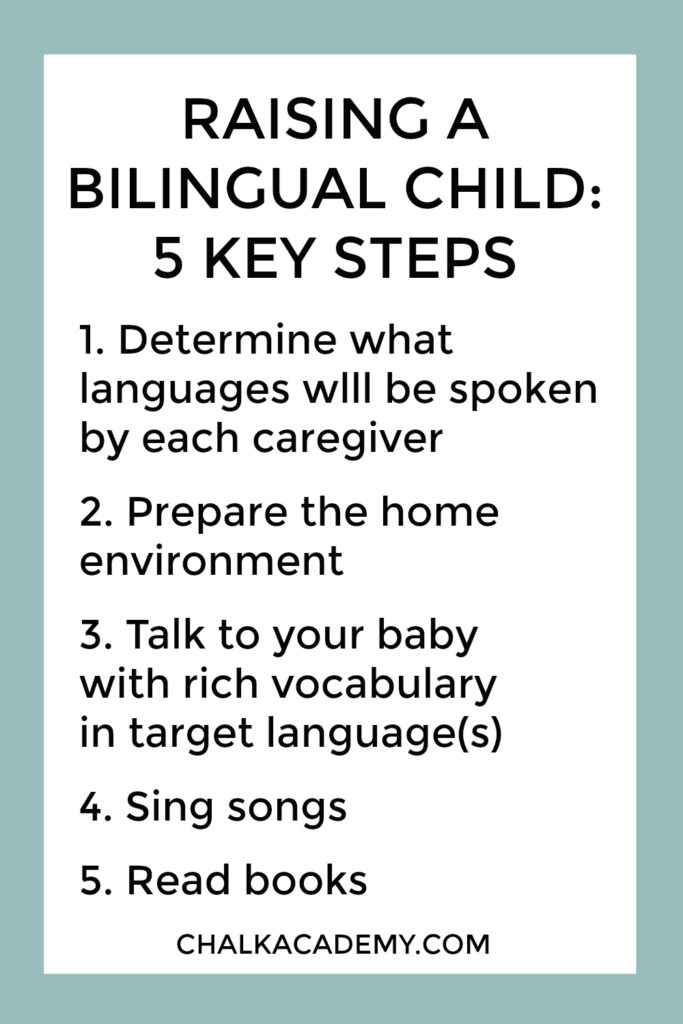
What if we’re not yet ready to raise a bilingual baby?
Please remember that the best time to start is different for every family. If the stars don’t align at this time, look for opportunities in the future.
Remember, your baby has plenty to learn every day. You can still plant a positive seed so they have respect for other languages.
Although acquiring a new language is often more challenging at older ages, kids and adults are learning languages worldwide at various ages. Many parents in our generation are learning and re-learning our mother tongue with our children.
Read How To Get Your Child To Speak the Minority Language for a detailed example of transitioning later in childhood.
Do you have questions about raising a bilingual baby?
Please leave a comment below! I’d love to hear your questions, concerns, and experiences raising a bilingual baby. The journey is rewarding, with encouragement and support from like-minded parents.

So helpful! I’m hoping to teach my second baby Thai but I am no longer fluent.
Hi Betty,
Great article! I especially liked your idea to decorate with items from the target language/culture. I’m raising my son with Dutch (my native language) and Japanese (my husband’s native language), but I often feel like my Dutch grammar is all messed up from only ever speaking English and Japanese. At this young age, I don’t suppose it matters too much, but I do worry about how he’ll sound as an adult. A problem for my future self I guess, haha.
Hi!
Thank you for your article, very interesting!
I have a question, I don’t have a child yet but I want them to be multilingual when the time comes (I am just getting ready). In my couple, I am the one multilingual (I speak 6 languages) and my husband only know the dominant language (despite me trying to teach him…). I want my futur child to know the languages I have learnt, but I don’t know how to proceed so they are not confused? I’ll continue to teach my husband by it is mostly likely that I am going to be the one switching tongue a lot…
Thank you again!
Hi Betty,
Thanks for this useful article 😊
I’m trying to learn English and simultaneously growing my bilingual baby. How much does my non-native English accent as a mother affect my child’s accent? Can English cartoons correct his accent?
Unfortunately I do not have access to a native coach
Hi! Congratulations on learning with your baby and thanks for your question Exposure to the native accent through media can help. Despite my non-fluent Mandarin Chinese, my kids have a native Mandarin accent through their tutor and also listening to hours of audiobooks, podcasts, music, and soundbooks. So I would suggest English audio resources to start with and video in the preschool / elementary years (preferably with real people over cartoons so can see mouth movements / facial expressions). I love story-time read-aloud videos for the preschool / kindergarten age!
ᴡʜᴀᴛ ᴀʙᴏᴜᴛ ᴛʜᴇ ᴀᴄᴄᴇɴᴛ ᴛʜɪɴɢ? ғᴏʀ ᴇxᴀᴍᴘʟᴇ ɪғ ɪ ᴡᴀɴɴᴀ ʀᴀɪsᴇ ᴍʏ ᴋɪᴅs ᴡɪᴛʜ ɢᴇʀᴍᴀɴ ᴀɴᴅ ᴇɴɢʟɪsʜ ʙᴜᴛ ɪ ᴡᴀɴᴛ ᴛʜᴇᴍ ᴛᴏ ʜᴀᴠᴇ ᴀɴ ᴀᴍᴇʀɪᴄᴀɴ ᴀᴄᴄᴇɴᴛ ғᴏʀ ᴇɴɢʟɪsʜ ᴀɴᴅ ᴀ ɢᴇʀᴍᴀɴ ᴀᴄᴄᴇɴᴛ ғᴏʀ ɢᴇʀᴍᴀɴ, ᴡʜɪᴄʜ ɪs ᴛʜᴇ ʙᴇsᴛ ᴍᴇᴛʜᴏᴅ ᴏғ sᴛʀᴜᴄᴛᴜʀᴇ? ᴀɴᴅ ᴛʜᴇʀᴇ ᴅᴏs ᴀɴᴅ ᴅᴏɴᴛs?
Hi Antonella! I would suggest exposing them to people (eg, friends, caregivers, tutors) and media (audiobooks, podcasts, music, videos) who speak the accent you’d like them to learn. My kids are exposed to various Chinese accents (Beijing, Taiwan, Shanghai), but they have a Beijing accent because the tutor and audiobooks we have.
Hello! I’m not a mom yet but I’m an older sibling who’s expecting a younger sibling later this year and I’m learning Korean. My native language is a mix of English and Amharic, but because I’m moving to Korea in a year or so, I’m trying to absorb the language as much as possible! My mom and the rest of my family don’t speak Korean, but because I’m learning it and because we’re moving there so soon, would it be possible for me to teach the baby vocabulary and such? (I’m intermediate level with a online tutor and self study)
Hi Kal, I’m not an expert like Betty, but I’d say,”Yes!” How cool that you are multilingual and are willing to teach your younger sibling.
I’m a mom (or maman) to a young boy fluent in English and French (my husband’s native language).
Betty, if you read this, my childhood story is similar to yours as far as rejecting my heritage and native language (Vietnamese) as a child. I’m relearning now and have felt the itch to teach my son some, though I’m far from fluent and have felt shame and lack of confidence. Finding your blog has inspired me to try!
Hi Berry,
Good article telling how to start! Thanks! By the way, just would like to ask about the “ deciding who to speak the language “ part. I speak both Cantonese and mandarin and would like to teach my baby both. But her Dad only speaks English. Is it ok for me to teach her both? Or she will get confused? Or how can I do it to reduce confusion? Another question is that, in your opinion as a pediatrician, does learning multi language delay baby’s first word? Thanks in advance!
Daisy
Hi Daisy! Great questions – yes you can definitely teach your baby both! Some parents who are teaching 2 languages alternate days of the week (for example M/W/F Cantonese and T/Th Cantonese) and create associations in other ways like with books, music, video chatting with family. And no, teaching multiple languages does not cause speech delay.
Love this! Thank you!
You’re welcome!
My in laws live with us and speak Tagalog to our son (now 7 weeks old) and plan to speak the minority language exclusively unless we’re all together as a family. Will my son have trouble with English if he starts spending most of the day with them once I return to work?